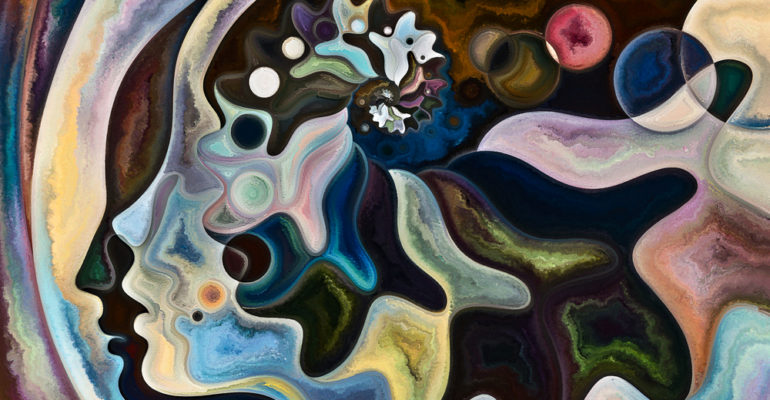The Legacy of Psychodynamic Theorists
Introduction:
In the rich tapestry of psychological thought, psychodynamic theory stands as a cornerstone, offering profound insights into the complexities of the human mind and behavior. From the pioneering work of Sigmund Freud to the contemporary contributions of Jung, Adler, and beyond, psychodynamic theorists have shaped our understanding of unconscious processes, personality development, and therapeutic practice. In this article, we embark on a journey through the annals of psychodynamic theory, exploring the diverse perspectives and enduring legacies of its most influential thinkers.
Sigmund Freud:
The Father of Psychoanalysis
No exploration of psychodynamic theory would be complete without paying homage to Sigmund Freud, the visionary neurologist whose pioneering work laid the foundation for modern psychoanalysis.[1] Freud’s revolutionary concepts, including the unconscious mind, defense mechanisms, and the psychosexual stages of development, forever changed the landscape of psychology. Through his groundbreaking clinical work and seminal texts such as “The Interpretation of Dreams[2]” and “Beyond the Pleasure Principle[3],” Freud introduced the world to the intricacies of the human psyche and the dynamic interplay between conscious and unconscious processes.
Carl Jung:
The Archetypal Explorer
Building upon Freud’s theories while charting his own path, Carl Jung expanded the horizons of psychodynamic theory with his exploration of the collective unconscious[4], archetypes[5], and individuation[6]. Jung’s concept of the persona, shadow, and anima/animus provided a framework for understanding the deeper layers of personality and the quest for self-discovery. His emphasis on spirituality, mythology, and symbolism opened new avenues for exploration within the realm of psychology, paving the way for the integration of Eastern and Western philosophies in therapeutic practice.
Alfred Adler:
The Champion of Individual Psychology
In contrast to Freud’s emphasis on instinctual drives, Alfred Adler[7] focused on the role of social and cultural factors in shaping personality and behavior. As the founder of individual psychology[8], Adler introduced concepts such as the inferiority complex, birth order, and the striving for superiority, highlighting the innate drive for self-improvement and mastery. Adler’s humanistic approach to therapy emphasized the importance of social interest, community feeling, and the creative self in fostering mental health and well-being.
Erik Erikson:
The Architect of Psychosocial Development
Expanding upon Freud’s psychosexual stages, Erik Erikson[9] proposed a comprehensive theory of psychosocial development, encompassing eight stages across the lifespan. From infancy to old age, Erikson delineated the key tasks and challenges individuals face as they navigate the journey of human existence. His emphasis on identity formation, intimacy, and generativity shed light on the complex interplay between biological, psychological, and social factors in shaping human development.[10]
Contemporary Contributions and Evolutions:
While the foundational theories of Freud, Jung, Adler, and Erikson continue to inform contemporary psychodynamic practice, modern theorists have built upon their insights, incorporating new research findings and cultural perspectives into the evolving landscape of psychodynamic theory. From object relations theory[11] to self-psychology[12], attachment theory[13], and relational psychoanalysis[14], contemporary psychodynamic theorists continue to explore the complexities of human relationships, the impact of early experiences on development, and the therapeutic process itself.
Conclusion:
The legacy of psychodynamic theory is vast and multifaceted, spanning generations of thinkers and practitioners who have illuminated the depths of the human psyche. From Freud’s groundbreaking discoveries to the contemporary insights of modern theorists, psychodynamic theory remains a vibrant and dynamic force in the field of psychology. As we honor the contributions of past and present psychodynamic theorists, we embark on a journey of exploration and discovery, seeking to unravel the mysteries of the mind and illuminate the path to healing, growth, and self-understanding.
Are you interested in delving deeper into Psychodynamic Psychotherapy? If so, discover whether our upcoming 6-week Psychodynamic Psychotherapy Certificate Course, commencing on May 7, 2024, is the right fit for you. Click here to learn more.
[1] Freud, Sigmund. The Complete Psychological Works of Sigmund Freud Vol. 19: The Ego And The ID & Other Works. Vol. 19. Random House, 2001.
[2] Freud, Sigmund. The interpretation of dreams. Spark Educational Publishing, 2005.
[3] Freud, Sigmund, and James Strachey. Beyond the pleasure principle. Vol. 18. London: Hogarth press, 1955.
[4] Jung, Carl Gustav. “The concept of the collective unconscious.” Collected works 9.1 (1936): 42.
[5] Jung, Carl Gustav. Four archetypes. Routledge, 2014.
[6] Brookes, Crittenden E. “Jung’s concept of individuation.” Journal of the American Academy of Psychoanalysis 19.2 (1991): 307-315.
[7] Adler, Alfred. The collected clinical works of Alfred Adler. Vol. 1. Alfred Adler Institute, 2002.
[8] Adler, Alfred. The practice and theory of individual psychology. Vol. 133. Routledge, 2013.
[9] Erikson, Erik, and Joan Erikson. “On generativity and identity: From a conversation with Erik and Joan Erikson.” Harvard Educational Review 51.2 (1981): 249-269.
[10] Erikson, Erik. “Theory of identity development.” E. Erikson, Identity and the life cycle. Nueva York: International Universities Press. Obtenido de http://childdevpsychology. yolasite. com/resources/theory% 20of% 20ident ity% 20erikson. pdf (1959).
[11] Flanagan, Laura Melano. “Object relations theory.” Inside out and outside in: Psychodynamic clinical theory and psychopathology in contemporary multicultural contexts 2.2 (2008): 121-160.
[12] Flanagan, Laura Melano. “The theory of self psychology.” Inside out and outside in: Psychodynamic clinical theory and psychopathology in contemporary multicultural contexts 4 (2011): 158-185.
[13] Howe, David. “Attachment theory.” Social work theories and methods 75 (2012).
[14] Aron, Lewis, and Adrienne Harris, eds. Relational psychoanalysis. Routledge Taylor & Francis Group, 2012.









